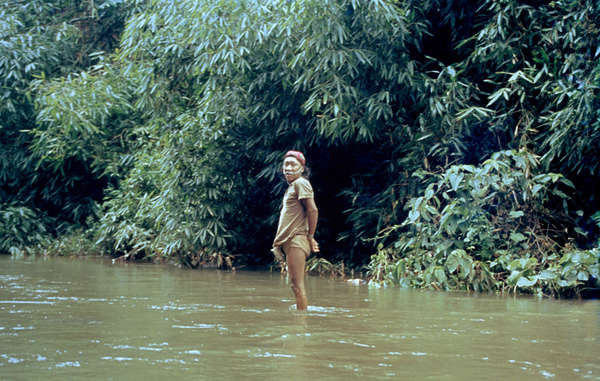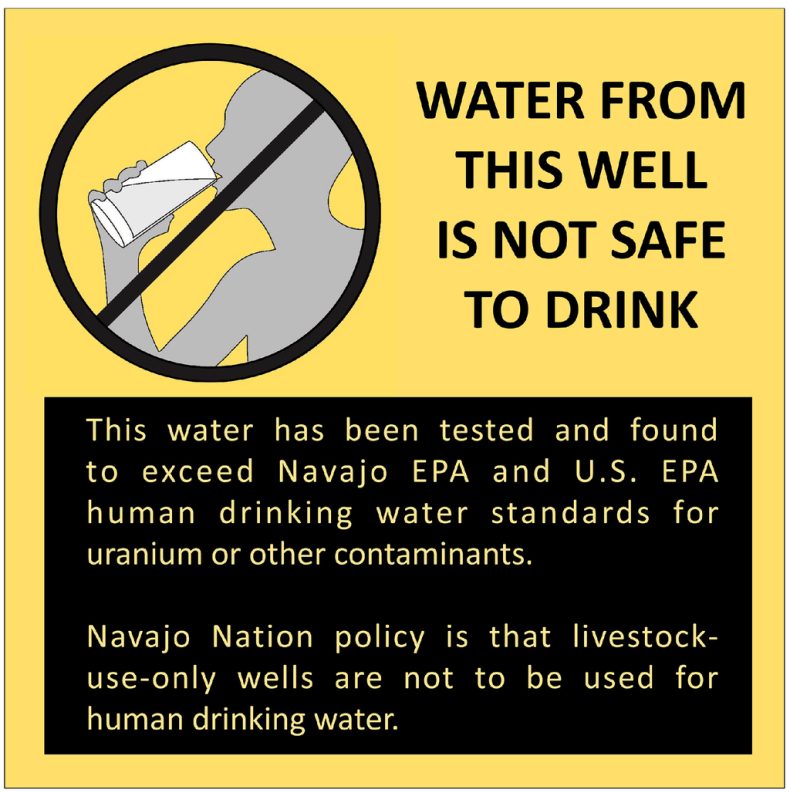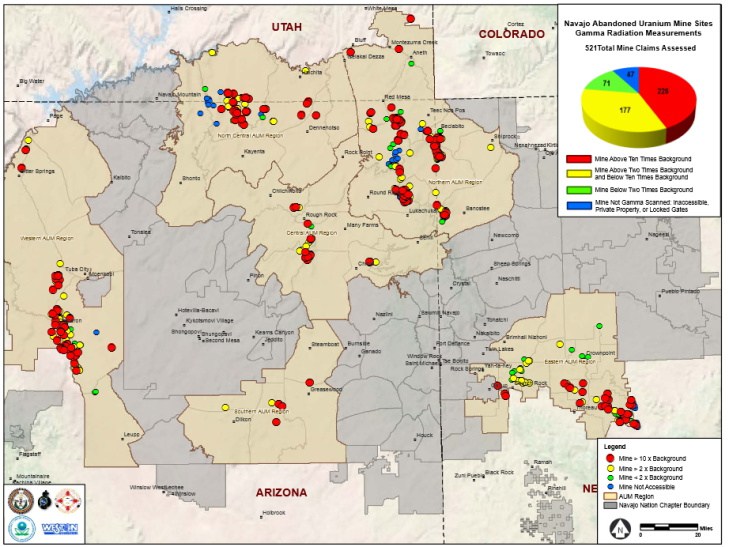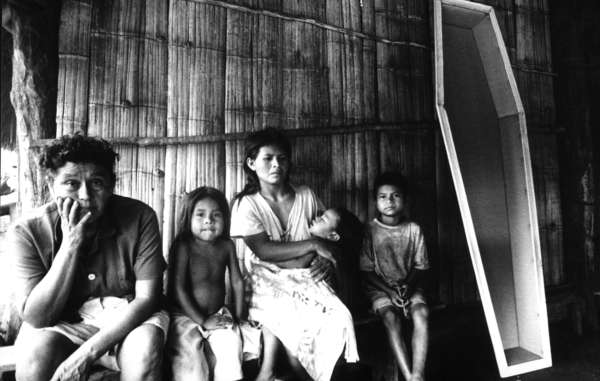by Deep Green Resistance News Service | Mar 13, 2016 | Toxification
Featured image: A huge proportion of the Nahua tribe have been affected by the poisoning, which causes anemia and acute kidney problems © Johan Wildhagen
By Survival International
Up to 80% of a recently-contacted tribe in Peru have been poisoned with mercury, raising serious concerns for the future of the tribe. One child has already died displaying symptoms consistent with mercury poisoning.
The source of the Nahua tribe’s poisoning remains a mystery, but experts suspect Peru’s massive Camisea gas project, which opened up the tribe’s land in the 1980s, may be to blame. The project has recently been expanded further into the Nahua’s territory, prompting fierce opposition from the tribe.
Rampant illegal gold mining in the region is another potential source of the mercury poisoning.
The Nahua, who live inside a reserve for isolated Indians in south-east Peru, have also been suffering from acute respiratory infections and other health problems since they were contacted.
Other indigenous communities in the area may also have been affected by mercury contamination, but tests have not been carried out. Some of these communities are uncontacted or extremely isolated. It is understood that the Peruvian Health and Environment Ministries have been aware of the problem since 2014.
AIDESEP, the main indigenous organization in Peru’s Amazon, is lobbying the government to carry out full health checks on the Nahua and other tribes in the area, and to conduct a proper investigation into the cause of the poisoning. A study was conducted by the Ministry of Health in spring 2015, but the results have yet to be published.

The Nahua were first contacted in the 1980s. Subsequent epidemics killed many members of the tribe
© Survival International
Nery Zapata, an indigenous leader, said: “Mercury contamination is extremely damaging to human health because its effects are irreversible. The health department must investigate this, and stop the contamination that is poisoning the indigenous population.”
Survival has also written to the Peruvian Ministries of Health and Culture urging them to publish the results of their study and put an end to the catastrophe.
Survival’s Director Stephen Corry said: “The Peruvian authorities have always been pretty indifferent to the problems facing their indigenous communities, and the total neglect they’ve shown in this case just proves it. Had this poisoning taken place in Lima, I don’t expect they would have been quite so casual in their response, or as slow to publish the results of their earlier findings. It’s nothing short of scandalous that they are not doing more to sort out this crisis. It’s also very telling that they are withholding information about it from the public.”

by Deep Green Resistance News Service | Feb 11, 2016 | Colonialism & Conquest, Toxification
Featured image: Figure from EPA Pacific Southwest Region 9 Addressing Uranium Contamination on the Navajo Nation
By Courtney Parker / Intercontinental Cry
Recent media coverage and spiraling public outrage over the water crisis in Flint, Michigan has completely eclipsed the ongoing environmental justice struggles of the Navajo. Even worse, the media continues to frame the situation in Flint as some sort of isolated incident. It is not. Rather, it is symptomatic of a much wider and deeper problem of environmental racism in the United States.
The history of uranium mining on Navajo (Diné) land is forever intertwined with the history of the military industrial complex. In 2002, the American Journal of Public Health ran an article entitled, “The History of Uranium Mining and the Navajo People.” Head investigators for the piece, Brugge and Gobel, framed the issue as a “tradeoff between national security and the environmental health of workers and communities.” The national history of mining for uranium ore originated in the late 1940’s when the United States decided that it was time to cut away its dependence on imported uranium. Over the next 40 years, some 4 million tons of uranium ore would be extracted from the Navajo’s territory, most of it fueling the Cold War nuclear arms race.
Situated by colonialist policies on the very margins of U.S. society, the Navajo didn’t have much choice but to seek work in the mines that started to appear following the discovery of uranium deposits on their territory. Over the years, more than 1300 uranium mines were established. When the Cold War came to an end, the mines were abandoned; but the Navajo’s struggle had just begun.
Back then, few Navajo spoke enough English to be informed about the inherent dangers of uranium exposure. The book Memories Come to Us in the Rain and the Wind: Oral Histories and Photographs of Navajo Uranium Miners and Their Families explains how the Navajo had no word for “radiation” and were cut off from more general public knowledge through language and educational barriers, and geography.
The Navajo began receiving federal health care during their confinement at Bosque Redondo in 1863. The Treaty of 1868 between the Navajos and the U.S. government was made in the good faith that the government – more specifically, the Bureau of Indian Affairs (BIA) – would take some responsibility in protecting the health of the Navajo nation. Instead, as noted in “White Man’s Medicine: The Navajo and Government Doctors, 1863-1955,” those pioneering the spirit of western medicine spent more time displacing traditional Navajo healers and knowledge banks, and much less time protecting Navajo public health. This obtuse, and ultimately short-sighted, attitude of disrespect towards Navajo healers began to shift in the late 1930’s; yet significant damage had already been done.
Founding director of the environmental cancer section of the National Cancer Institute (NCI), Wilhelm C. Hueper, published a report in 1942 that tied radon gas exposure to higher incidence rates of lung cancer. He was careful to eliminate other occupational variables (like exposure to other toxins on the job) and potentially confounding, non-occupational variables (like smoking). After the Atomic Energy Commission (AEC) was made aware of his findings, Hueper was prohibited from speaking in public about his research; and he was reportedly even barred from traveling west of the Mississippi – lest he leak any information to at-risk populations like the Navajo.
In 1950, the U.S. Public Health Service (USPHS) began to study the relationship between the toxins from uranium mining and lung cancer; however, they failed to properly disseminate their findings to the Navajo population. They also failed to properly acquire informed consent from the Navajos involved in the studies, which would have required informing them of previously identified and/or suspected health risks associated with working in or living near the mines. In 1955, the federal responsibility and role in Navajo healthcare was transferred from the BIA to the USPHS.
In the 1960’s, as the incidence rates of lung cancer began to climb, Navajos began to organize. A group of Navajo widows gathered together to discuss the deaths of their miner husbands; this grew into a movement steeped in science and politics that eventually brought about the Radiation Exposure Compensation Act (RECA) in 1999.
Cut to the present day. According to the US EPA, more than 500 of the existing 1300 abandoned uranium mines (AUM) on Navajo lands exhibit elevated levels of radiation.

Navajo abandoned uranium mines gamma radiation measurements and priority mines. US EPA
The Los Angeles Times gave us a sense of the risk in 1986. Thomas Payne, an environmental health officer from Indian Health Services, accompanied by a National Park Service ranger, took water samples from 48 sites in Navajo territory. The group of samples showed uranium levels in wells as high as 139 picocuries per liter. Levels In abandoned pits were far more dangerous, sometimes exceeding 4,000 picocuries. The EPA limit for safe drinking water is 20 picocuries per liter.
This unresolved plague of radiation is compounded by pollution from coal mines and a coal-fired power plant that manifests at an even more systemic level; the entire Navajo water supply is currently tainted with industry toxins.
Recent media coverage and spiraling public outrage over the water crisis in Flint, Michigan has completely eclipsed the ongoing environmental justice struggles of the Navajo. Even worse, the media continues to frame the situation in Flint as some sort of isolated incident.
Madeline Stano, attorney for the Center on Race, Poverty & the Environment, assessed the situation for the San Diego Free Press, commenting, “Unfortunately, Flint’s water scandal is a symptom of a much larger disease. It’s far from an isolated incidence, in the history of Michigan itself and in the country writ large.”
Other instances of criminally negligent environmental pollution in the United States include the 50-year legacy of PCB contamination at the Mohawk community of Akwesasne, and the Hanford Nuclear Reservation (HNR) situated in the Yakama Nation’s “front yard.”
While many environmental movements are fighting to establish proper regulation of pollutants at state, federal, and even international levels, these four cases are representative of a pervasive, environmental racism that stacks up against communities like the Navajo and prevents them from receiving equal protection under existing regulations and policies.
Despite the common thread among these cases, the wave of righteous indignation over the ongoing tragedy in Flint has yet to reach the Navajo Nation, the Mohawk community of Akwesasne, the Yakama Nation – or the many other Indigenous communities across the United States that continue to endure various toxic legacies in relative silence.
Current public outcry may be a harbinger, however, of an environmental justice movement ready to galvanize itself towards a higher calling, one that includes all peoples across the United States, and truly shares the ongoing, collective environmental victories with all communities of color.

by Deep Green Resistance News Service | Feb 9, 2016 | Alienation & Mental Health, Colonialism & Conquest
Featured image: A bereaved Guarani family waiting beside a coffin. The wave of suicides that has struck the Guarani Indians in the last 20 years is unequalled in South America. Suicide is often seen as the only option by people forced from their land and into a way of life they did not choose. Photo © João Ripper/Survival
By Survival International
A new report published by Survival International reveals that the appalling suicide rate among the indigenous Guarani Kaiowá people of southern Brazil is the highest in the world.
The rate of self-inflicted deaths within the tribe is 34 times the Brazilian national average, and statistically the highest among any society anywhere on earth. Suicide rates among many other indigenous peoples such as Aboriginal Australians and Native Americans in Alaska also remain exceptionally high. This can be viewed as the inevitable result of the historical and continuing theft of their land and of “development” being forced upon them.
The report, “Progress can Kill,” exposes the devastating consequences of loss of land and autonomy on tribal peoples. As well as the shockingly high suicide rates among tribes, it also reveals high rates of alcoholism, obesity, depression and other health problems.
Particularly striking statistics include the sky-rocketing rates of HIV infection in West Papua, which increased from almost no cases in 2000 to over 10,000 by 2015, and the rate of infant mortality among Aboriginal Australians – twice that in wider Australian society. In large parts of the world, poor nutrition continues to cause further problems, such as malnutrition for Guarani children in Brazil, who are forced to live on roadsides, and obesity for many Native Americans, for whom junk food is the only viable option.
Roy Sesana of the Botswana Bushmen, forcibly evicted from their land in 2002, said: “What kind of development is this when the people lead shorter lives than before? They catch HIV/AIDS. Our children are beaten in school and won’t go. Some become prostitutes. We are not allowed to hunt. They fight because they are bored and get drunk. They are starting to commit suicide. We never saw this before. Is this ‘development?’”

Many Aché starved to death after being forced from their forest home in Paraguay
© Don McCullin/Survival
Olimpio, of the Guajajara tribe in the Brazilian Amazon, said: “We are against the type of development the government is proposing. I think some non-Indians’ idea of ‘progress’ is crazy! They come with these aggressive ideas of progress and impose them on us, human beings, especially on indigenous peoples who are the most oppressed of all. For us, this is not progress at all.”
All of these statistics demonstrate the fatal consequences of forcing change on tribal societies in the name of “progress” and “development.” In many cases, tribes have been forced to move away from abundant and sustainable food sources and a sure source of identity in favour of poverty and marginalization on the fringes of mainstream society. Tragic repercussions of such forced change can continue even several generations down the line.
Around the world, tribes continue to fight for the recognition of their right to live on their lands in peace. Where this right has been respected or restored, tribes flourish. For example after the creation of an indigenous reserve in the northern Amazon in 1992, medical teams worked with tribal shamans and together they halved the mortality rate among the Yanomami Indians. Likewise, the Jarawa In India live on their ancestral lands and enjoy what has been called a “life of opulence.” Nutrionists rate their diet as “optimum.”
For more information you can download Survival’s new short report, “Progress can kill,” and a more in-depth paper for those wanting to know more.
Around the world development is robbing tribal people of their land, self-sufficiency and pride and leaving them with nothing. Watch this short, satirical film, written by Oren Ginzburg and narrated by actor and comedian David Mitchell, which tells the story of how tribal peoples are being destroyed in the name of “development.”
Survival International, the global movement for tribal peoples’ rights, is calling for the United Nations to enforce better protection of tribal land rights and to call on governments to uphold their commitments to their indigenous peoples.
by Deep Green Resistance News Service | Jul 13, 2013 | Toxification
By Institute of Physics
Over two million deaths occur each year as a direct result of human-caused outdoor air pollution, a new study has found.
In addition, while it has been suggested that a changing climate can exacerbate the effects of air pollution and increase death rates, the study shows that this has a minimal effect and only accounts for a small proportion of current deaths related to air pollution.
The study, which has been published today, 12 July, in IOP Publishing’s journal Environmental Research Letters, estimates that around 470,000 people die each year because of human-caused increases in ozone.
It also estimates that around 2.1 million deaths are caused each year by human-caused increases in fine particulate matter (PM2.5) – tiny particles suspended in the air that can penetrate deep into the lungs, causing cancer and other respiratory disease.
Co-author of the study, Jason West, from the University of North Carolina, said: “Our estimates make outdoor air pollution among the most important environmental risk factors for health. Many of these deaths are estimated to occur in East Asia and South Asia, where population is high and air pollution is severe.”
According to the study, the number of these deaths that can be attributed to changes in the climate since the industrial era is, however, relatively small. It estimates that a changing climate results in 1500 deaths due to ozone and 2200 deaths related to PM2.5 each year.
Climate change affects air pollution in many ways, possibly leading to local increases or decreases in air pollution. For instance, temperature and humidity can change the reaction rates which determine the formation or lifetime of a pollutant, and rainfall can determine the time that pollutants can accumulate.
Higher temperatures can also increase the emissions of organic compounds from trees, which can then react in the atmosphere to form ozone and particulate matter.
“Very few studies have attempted to estimate the effects of past climate change on air quality and health. We found that the effects of past climate change are likely to be a very small component of the overall effect of air pollution,” continued West.
In their study, the researchers used an ensemble of climate models to simulate the concentrations of ozone and PM2.5 in the years 2000 and 1850. A total of 14 models simulated levels of ozone and six models simulated levels of PM2.5.
Previous epidemiological studies were then used to assess how the specific concentrations of air pollution from the climate models related to current global mortality rates.
The researchers’ results were comparable to previous studies that have analysed air pollution and mortality; however, there was some variation depending on which climate model was used.
West added, “We have also found that there is significant uncertainty based on the spread among different atmospheric models. This would caution against using a single model in the future, as some studies have done”.
From Friday 12 July, this paper can be downloaded from http://iopscience.iop.org/1748-9326/8/3/034005/article.
From Institute of Physics: http://www.iop.org/news/13/jul/page_60518.html
by Deep Green Resistance News Service | Aug 4, 2012 | Mining & Drilling, Toxification
By Carla Salazar / Associated Press
More than 100 rural Peruvians have been sickened by the spill of a toxic copper concentrate produced at one of the Andean country’s biggest mines, authorities said Friday.
The Ancash state regional health office said 140 people were treated for ‘‘irritative symptoms caused by the inhalation of toxins’’ after a pipeline carrying the concentrate under high pressure burst open in their community.
Most of the injured had joined in efforts to prevent liquid copper slurry from reaching a nearby river after the pipeline linking the Antamina copper mine to the coast ruptured last week in the village of Santa Rosa de Cajacay, said the community’s president, Hilario Moran.
‘‘Without taking into account the consequences, we pitched in to help,’’ Moran told The Associated Press by phone.
The people used absorbent fabric provided by the mine but were not given gloves or protective masks, said Antonio Mendoza, the mine’s environmental director. Shortly afterward, people became ill, vomiting, suffering headaches and nose bleeds.
‘‘That’s unethical and irresponsible and they should know better,’’ Greg Moller, a professor of environmental chemistry and toxicology at the University of Idaho-Washington State University, said of the mining company’s enlisting villagers in the cleanup without proper protective gear.
Mendoza said the substance that spilled ‘‘was not necessarily toxic.’’
‘‘It’s a dangerous substance to the extent that it’s an industrial substance,’’ he said. ‘‘They are dangerous substances that require a particular handling but aren’t necessarily toxic.’’
Moller disputed that characterization.
‘‘This was actually a toxic episode and these people are intoxicated,’’ he said, adding that the alkaline copper concentrate likely damaged lung tissue, causing chemical burns.
He said it was his understanding that the rupture released a mist of concentrate, which could have created a fine cloud of toxic airborne particles.
‘‘There are a lot of chemical and physical irritants in that mix,’’ Moller said.
About 30 people were taken to the San Pablo hospital in the highlands regional capital of Huaraz immediately after the July 25 rupture, Moran said. ‘‘Some people continue to get sick and continue to go to Huaraz,’’ he added.
Read more from Boston.com:





